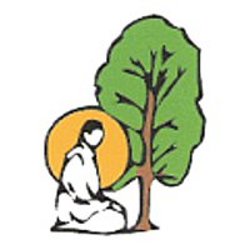Aikido
Aikido is a Japanese martial art created by Morihei Ueshiba, referred to as O Sensei (meaning Great Teacher) by Aikido practitioners. Aikido utilises joint locks and manipulations as well as throws in order to overpower an attacker without causing them injury. As such Aikido utilises the aggressive intent and energy of an opponent to subdue them and does not depend on size or strength to accomplish this. The techniques of Aikido are effective against single or multiple attackers and are often taught using Japanese weapons such as the bokken (a wooden katana, or Japanese samurai sword) and jo (a Japanese short staff). Aikido also teaches effective relaxation techniques, breathing exercises and the enhancement of 'Ki', a Japanese word meaning life energy, power or spirit.
Aikido is usually described as a non-aggressive martial art, which at first glance sounds a little contradictory. But in Aikido the emphasis is on control and restraint rather than inflicting injury upon your opponent or attacker. In practical terms this makes Aikido the only completely legal means of self-defence available in certain situations, for example hospital workers. In a hospital, situations can arise where a member of staff needs to defend themselves against an attacker but they are not allowed to do so by injuring that attacker. So other arts which might advocate strikes and throws as a means of defence would not necessarily be considered an appropriate means of defence. Kicking a violent patient in the head is not an appropriate action for a doctor to take, restraining them in a calm and effective manner is. This principle also extends to other professions where a similar situation may arise.
Often the best defence is simply to remain calm and not to panic. This is more often than not much more difficult than it sounds. In Aikido however there are practical exercises taught to increase awareness of tension in the body and increase the students ability to retain a calm mind even under pressure in difficult circumstances. As such much of the benefit of other practices such as yoga for example can be found within Aikido training, where they are effectively combined with practical self defence methods. Aikido is also unsurprisingly a good way to learn more about Japanese culture and history, and while Aikido as practiced in the western world is not the same as experiencing Japanese culture first hand in Japan itself (unless you are perhaps lucky enough to have a Japanese Aikido teacher), it is a good way to become more familiar with a special part of Japanese cultural heritage, namely its martial arts, or Budo as it is known in Japan.
Ki-Aikido is a particular group of Aikido styles that derive from Koichi Tohei Sensei 10th Dan. Tohei Sensei was the Chief Instructor of Aikido under its founder Morihei Ueshiba O Sensei and was awarded the highest possible rank in Aikido by O Sensei in the late 1960's. Ki-Aikido places emphasis on actively teaching relaxation in order to unify and coordinate mind and body. Unlike other martial arts Ki-Aikido has specific methods and teaching directed at helping the student to learn how to be calm and relaxed under pressure. Exercises are used to teach the student how to coordinate mind and body in a relaxed way and thus to achieve the most powerful and efficient ways of moving and using the body, it is with them one can defend oneself without any great physical exertion, this means that Ki-Aikido is a method of self defence which is able to be practiced by anyone regardless of gender, size, strength or disability. In addition to this the calmness and relaxation techniques are applicable to situations in daily life that do not involve self defence. For example, many people suffer from headaches as a result of tension in the neck and shoulders, this can arise from using a computer for long periods of time. The relaxation methods taught in Ki-Aikido can help enable a person to relax and thus avoid such problems and many other similar problems also.
